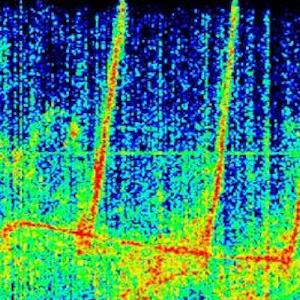Beautiful or imaginary, silence plays a very important role in music. Without silence we are unable to sense time and beat. Without silent spaces or call it distance between two sounds, we are left with a continuous avalanche of sound. Imagine an infinite crescendo? Silence is hard to define, even more stifling to localize - to control or manipulate when compared to setting up instruments and creating tracks. As producers, musicians and audience we are always clued into sounds and not with the corresponding silence. Silence is the medium upon which musical action is built. Aesthetics of rock, pop, EDM, hip hop, reggaeton etc is all about filling up the sound spectrum, where silence is at best applied to create a sense of anticipation or momentary shock. Separated by milliseconds or seconds or more, sounds validate their presence on a background, which is understood as silence. The same axiom applies for the listener(s) at the receiving end. How do we perceive silence? What do we make of silence as capacity? This article is a brief introduction about silence. About that quiet mysterious field which hosts the music. Let's take a trip into those secret little zones that live within every song and composition.

Silence can be defined in many ways. Here we are not concerned with absolute silence, which is defined as infinity in digital audio –∞ dBFS. The aspect of silence that exists for a fraction of a moment or as audible pauses within a given audio spectrum plays a fundamental role. Music, be it it full of beats, instruments and voices, fast or slow, loud or soft, ambient or noisy, sad or happy etc etc contains silent spaces. Perceived by us at a conceptual, artistic and psychological level. Any waveform editor will reveal the peaks and falls of a song, at a microscopic or macro level. Visually we can understand silences in relationship to surrounding timbre and time duration, as well as 'see' silence interacting with continuity and dynamics. Imagine sounds as short bursts of energy, while silences as short bursts of dark matter, co-existing, to give us what we perceive as continuous sounds, beats and music. Ears can perceive micro tonal changes as well as the occurrence of silent spaces (the tiny fractions). Tests done by Amplifon, show that an average ear can detect gaps of up to 0.08 milliseconds (of absolute silence) while listening to recorded sounds (resolution 48khz = 48000 times a second)
Silence can be understood on a double axis - the horizontal (space) and the vertical (amplitude). A sound can only rise or fall (start and stop) regardless of it's length, while the presence of silence is inversely proportional to that. Silence is marked in a mathematical grid when we are making beats on a sequencer and in a aesthetic way when we place notes and sounds using instruments and synthesizers. At a psychological level, it's amusing that we we remain deeply focused on the occurrence of sound and not on the preceding silence. Yet the two ends always co-exist. "The point where a note ends and the next one is yet begin, is elastic, is transitional and as a composer we still have no idea what is the meaning of that very point. It remains invisible yet audible" Pierre Boulez, 1982.

Aaron Copeland (American composer) has defined silence as "objects or figures inside music's continuity" He created four categories. Hard-edged silence - spaces left out by an array of short duration sounds (imagine a simple 4/4 beat). Echo silence / Feedback silence - a cascade of notes (imagine a violin glide) falling or rising in amplitude and pitch. Filtration silence - when we add or subtract frequencies of a given sound, the silent parts disappear or appear. The classic filter sweep being an example. Constructed silence - when we deliberately slow down or speed up instrumentation to acquire the desired effect and complexity. These four models throw new light into the role of silence. Perhaps a new way to understand the eternal play between the audible and the silent. This interlink can be clearly seen when we view a waveform and inspect the quiet moments in between the peaks and drops, however busy or sparse, melodic or atonal. When we view sound in terms of energy, the continuous rise and fall of decibel levels and pitch is juxtaposed by the corresponding dark spaces (silent parts). Next time you use a waveform editor, notice the dark spaces which exist inside every sound or piece of music. No sound is really absolutely continuous - it just 'appears' so. The reason certain sounds are nicely audible at a low level and sounds at a high level are clearly present but not overpowering. No wonder a kick takes up so much more space (volume) than a hi-hat, yet both complimenting each other dynamically.
The subject gets even more curious and cryptic when we enter the silent spaces between words. Lyrics and the emphasis point of words, is also playing with silence in many ways. Just as timbre, transients, punctuation and accent create unique characteristics of a voice, the silent spaces between the rise and fall of words is also part of the melody and the song. The silent spots connect the past with the present leading to the future. We can sing the same tune slow or fast, high or low, yet the emphasis points must remain fixed and as a result there is fluid contraction or expansion of the silent parts. Consciously playing with words, emphasis points and melody while unconsciously dealing with silence, the singer is weaving the song. "The unconscious use of emphasis points has existed since the dawn of humanity and through the ages of civilization and modern times. Pop songs utilize emphasis points in the simplest and most effective way over a short period of time. Certain classical forms of vocal music (Indian Ragas, Western Opera etc) contain complex emphasis points. However simple or complex, words follow silence which follows the next word. What seems to be a paradox - do lyrics rest upon the silence or the other way around?" asks Zofia Lissa 1974 (Musicologist)

"Many prominent composers have expressed that silence’s main function in music is that of articulating form. One way or another, all silences have some type of impact of a varying degree. Beyond that effect, we cannot change the role of silence at a formal and structural level. However, at an aesthetic, experimental and conceptual level, there are vast uncharted spaces in the realm of silence" says Bohdan Syroyid (Contemporary Music, University of Valladolid Spain). The idea of having the ability to manipulate silence in a new way seems quiet bizarre and fascinating. How can we access those secluded spaces? Is silence actually palpable? Maybe as an interruptive device (in the future) because it interrupts or plays not with new any material, but with an absence. Sound and silence relate to each other as the essential versus the supplement, and many argue about it being the other way around. Silence assumes a different quality as we dwell deeper into it's role and existence. It is no longer the temporal absence of sound, that defines silence, but the very existence upon which music and sounds emerge from. Here's to some silence manipulation and meditation, maybe not so silently!



























0 -